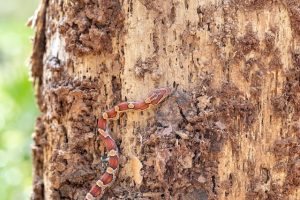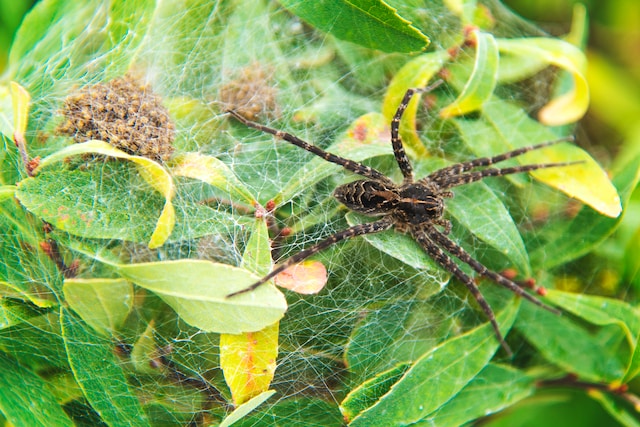Introduction: Embarking on a journey into the unexpected perils of Michigan, we confront an unusual threat skunks. Join me as we unravel the unfolding narrative of rising rabies fears in the state, triggered by these seemingly harmless creatures. This article aims to shed light on the nuances of this peculiar situation, providing essential insights into
Introduction:
Embarking on a journey into the unexpected perils of Michigan, we confront an unusual threat skunks. Join me as we unravel the unfolding narrative of rising rabies fears in the state, triggered by these seemingly harmless creatures. This article aims to shed light on the nuances of this peculiar situation, providing essential insights into the evolving landscape of public health.
The Skunk Menace: An Unanticipated Catalyst
Michigan, known for its scenic landscapes, is grappling with an unforeseen menace – skunks. Once considered harmless, these creatures are now at the center of an unsettling surge in rabies fears. We delve into the reasons behind this unexpected twist, exploring the factors that have turned these once innocuous animals into potential carriers of peril.
Unprecedented Rabies Cases: A Statistical Analysis
Numbers paint a vivid picture of the escalating rabies fears. Through a thorough statistical analysis, we examine the unprecedented rise in rabies cases attributed to skunks in Michigan. The data provides a stark illustration of the urgency surrounding this public health concern, prompting a closer look at the implications for both human and animal populations.
The Ecological Imbalance: Skunks as Vectors
Beyond the immediate threat of rabies, we investigate the ecological factors contributing to skunks becoming vectors for the virus. How has the delicate balance of Michigan’s ecosystem been disrupted, leading to this unexpected twist? Understanding the ecological dimension is key to devising effective strategies for mitigating the threat.
Human-Wildlife Interaction: A Delicate Dance
The increasing interaction between humans and wildlife, particularly skunks, is a critical aspect of this narrative. We explore how urbanization, changing habitats, and human behavior contribute to the heightened risk of rabies transmission. This section aims to illuminate the complexities of coexistence and the challenges it presents for public health officials.
Public Health Response: Navigating the Crisis
In the face of this burgeoning crisis, how are public health authorities in Michigan responding? We analyze the strategies employed to contain the spread of rabies and address the growing concerns within the community. Understanding the proactive measures taken is crucial for gauging the effectiveness of the response.
Community Awareness: The Role of Education
Educating the public about the risks associated with skunks and rabies is paramount. We explore the initiatives taken to raise awareness within the community, examining outreach programs, informational campaigns, and the role of local authorities in fostering a better-informed populace.
Expert Opinions: Insights from Wildlife and Health Professionals
To gain a comprehensive understanding, we turn to experts in wildlife management and public health. Their insights provide a nuanced perspective on the skunk-driven rabies fears in Michigan, offering potential solutions, and guiding us towards a more informed approach to mitigating the threat.

Photo by Richard Stovall on Unsplash
Key Points Table: From Pet to Peril: Skunks Drive Unprecedented Rabies Fears in Michigan
| Section | Key Points |
|---|---|
| Introduction | – Unraveling the unexpected rise in rabies fears in Michigan |
| – Skunks emerge as an unusual catalyst for public health concerns | |
| The Skunk Menace | – Transition from harmless creatures to potential rabies carriers |
| – Factors contributing to the skunk-driven surge in rabies fears in Michigan | |
| Unprecedented Rabies Cases | – Statistical analysis showcasing the alarming increase in rabies cases |
| – Implications for both human and animal populations in the region | |
| The Ecological Imbalance | – Investigating ecological factors that turn skunks into vectors for the virus |
| – Understanding disruptions in Michigan’s ecosystem and their impact | |
| Human-Wildlife Interaction | – Exploring the complex relationship between humans and skunks in changing habitats |
Conclusion:
As we conclude our exploration into the unexpected rise in rabies fears in Michigan, driven by skunks, we are left with a multifaceted understanding of the situation. From ecological imbalances to human-wildlife interactions and the community response, this article aims to unravel the complexities surrounding this public health challenge. By shedding light on the evolving landscape of rabies fears in Michigan, we contribute to the broader conversation on wildlife management, public health, and the delicate balance between humans and nature.

















Leave a Comment
Your email address will not be published. Required fields are marked with *